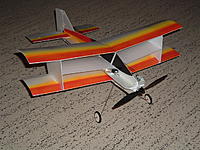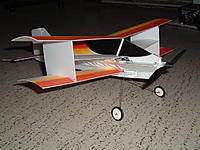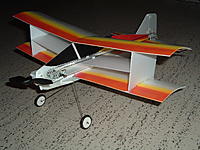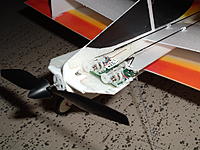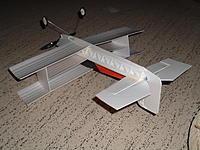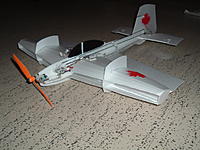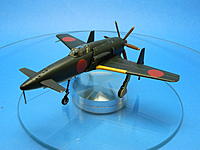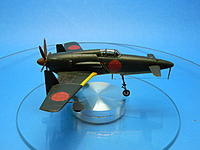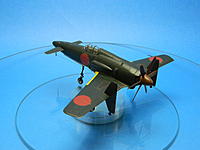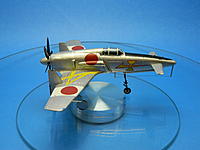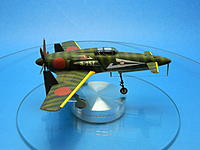Posted by phil alvirez |
Jan 24, 2012 @ 06:11 PM | 8,478 Views
this is a 20" ws-100 sq in version for 2 cells motors of the original snowstang 18". the idea is to increase power, and a little bit of wing area, to compensate for the expected gain in weight.
as the original version for 1 cell generated no more than 60 gr of thrust (that is the top i got with 1 cell motors), i decided to give a try to 2 cells.
i had to go to a 2 cells brushless esc. the lightest i found was the turnigy plush 6a that weighs 5 grams with wires/conns.
i performed 2 cells bench tests of 3 outrunner motors. the HXM 14mm motor from hk (that weighs no more than the single cells motors) did only 60 gr on a 2x120 hyperion. with the park 180, that weighs only 2 grams more i got 120, and with the 1811-2000, that weighs 2 grams more than the park 180, i got 140. i choose the park. 120 gr thrust and 60 gr auw means a 2:1 ratio, that seems enough for the purpose. the auw is 60 gr, compared to 50 of the 18": 2 gr go for the increase in plane's size, 3 for the difference between the single cell esc and the 2 cells, 3 for the larger pack, and 2 for the motor. the area went from 90 to 100 sq in. same gws 6/3 prop. following details are about same as on the 18" version: foam is depron from rcfoam. nose is 3mm, ailerons and stab 2mm, rest 1mm. glue is beacon foam-tac that dries hard and fast. motor is mounted to a 1/8" plywood firewall. i used .6 mm cf rod on sides, top and bottom of fuse, and under left side fuse diagonals for stiffening;
...Continue Reading
Posted by phil alvirez |
Jan 23, 2012 @ 09:56 AM | 8,452 Views
when flying was invented, people flew just for the fun of it, but then when they learned that could go faster through the air, the race began. the idea was to go faster and faster, therefore the less drag, the better. but for trainers and for 3d flying that go nowhere, the slower the better. 3d just stay there like helicopters, and even they add air brakes to slow them down, but those air brakes spoil lift and stability. i recalled that bipes generate more drag due to the air compressing between wings, but still lift is not spoiled so much as with air brakes. and the closer they are, the more drag. so my idea is to have 2 (or more) wings close enough to have more drag to slow down the flight. i call this, 'narrow gap wings'
but, how much more drag am getting? how this affect stability and maneurability? how this changes when varying the space between wings? for instance, on chord %: 5, 10, 20%? and should the extra wing be considered as double the lift and/or drag, and therefore the tail area be doubled to compensate?
am starting this thread with the purpose of bringing light to the subject by collecting data, be from my own experiments, or from other adventurous fellows that may have done (or are willing to do) something related. also, i don't take any claims for 'inventing' nothing. just the idea came to my mind and am trying to see how practical the concept may be, even if restricted only to 3d or trainers for indoor or outdoor flying on calm weather. if some1
...Continue Reading
Posted by phil alvirez |
Jan 22, 2012 @ 08:50 PM | 9,269 Views
i asked Lucien Miller, of innov8tive designs, what's the difference bet escs for brushed or brushless motors. he said:
Brushed ESC's require only one transistor typically to turn the power on and off between the battery and motor. In a brushed motor, the commutation happens internally in the motor, so you simply need to feed it voltage. If you have a 12 volt battery and hook it directly to the motor, it will run at a certain speed. If you put an ESC in between the motor and ESC, and have the ESC operate so that it turns on and off quickly, normally around 2000 or 3000 times per second, you can vary the amount of power that reaches the motor.
If the ESC is on for half of the time and off for half of the time during each cycle, the average effective voltage that the motor gets is 6 volts, and you have half throttle. If it is on for 1/4 of the time and off for 3/4 of the time, you effectively get 3 volts, and you have 1/4 throttle.
In brushless motors, there is no commutator, so that has to be done in the speed controller. Also, brushless motors are usually 3 phase motors, and that is why they have 3 wires. A brushless speed controller usually requires a minimum of 6 transistors, 3 N-channel and 3 P-channel. When the motor runs at full throttle, the ESC sends out pulses in turn to phase A, then Phase B and finally Phase C before repeating the process. Each time you go through one cycle of all 3 phases, the motor rotates through 2 magnets in the housing. This process repeats over and over again as the motor spins. For less than 100% throttle, the ESC chops up each of the phase pulses into smaller pulses, just like the brushed ESC does, and this provided reduced effective voltage to the motor and it slows down.
actually, the process is very complicated and would take several pages to fully explain, but that is the basic difference between brushed and brushless ESC's.
Posted by phil alvirez |
Jan 22, 2012 @ 08:48 AM | 10,998 Views
minimum practical size for 3d
from what i have tried, i think the smallest is 24"wsx85gr 2cells for 3d performance using affordable equipment (not expensively priced). smaller like 4site can do but are too fragile to be practical. they get damaged too easily.
my snowstang (18"ws/50gr auw) can't be built lighter and with structure to handle normal flying-and this includes occasional crashing. i tried it with the brush8 and 7/3.5 and then 6/3 but just doesn't have enough power. changed to 1015 w/4:1 gb, but trying at home it barely holds at wot and when tried at the gym, it flies around and can do some aerobatics like rolls, but does not have enough power to do 3d. i was able to fly it non-stop high at the gym. although no 3d or unlimited vertical, has good power to perform rolls and depends more on my ability to learn how to try more maneuvers. maximum thrust i get is 55 grams.
extremely sensitive to ailerons, and turn is controlled with ail and rudder. the guys were impressed with it, but i realize i have to try 2 cells in the future.
i will mount 2 cells motors like the HXM 1400, park 180 and 1811-2000. but then, if i use these 2 cells motors that fit on the larger 24" class that have more wing area and don't weigh much more, what's the point? wing loading is crucial but the other factor is power loading. after trying 2cells i will see if it is enough for decent 3d. if i find a way to get enough power to hover i will try other designs,
...Continue Reading
Posted by phil alvirez |
Jan 19, 2012 @ 04:14 PM | 11,215 Views
once i worked at an office in a 17th floor of a building downtown, and my desk was near a window. 1 afternoon, when i happened to look outside, i noticed a swallow flying nearby at same level of my window, without flapping its wings. then it came back. she was doing figure 8s without flapping its wings. what happened was that she was using the constant wind that was blowing against the building and then going up, so it generated a constant updraft, like the 1 at slopes where the guys fly sailplanes. it did so for about 5 minutes, and then flew away. next day i looked at the window at same time and suddenly here she came, having the time of her life! she did it every afternoon at about the same time. amazing how creatures of the air enjoy flying. like buzzards, eagles, gulls or hawks getting into thermals. they enjoy soaring and also do it for going somewhere, once at the top of the thermal, or to have a better view for prey, but this fellow was just for the pleasure of soaring.
remember jonathan livingston seagull?
Posted by phil alvirez |
Jan 18, 2012 @ 11:02 AM | 10,562 Views
what is an ultra micro, in 1st place? when i saw at the gym an ultra micro (um) sukhoi from horizon for the 1st time, i decided to get it for using its parts for my own designs. i developed a trainer/sport (the elf) with undercambered hi-wing with 1mm foam, 18" ws/50gr auw, that flew way slower than the sukhoi-which is an aerobatic plane for experts. then i gradually increased the size of my planes to 20", 22, and 24", and still they don't use all the power-and fly slower, so they are great for slow flying at the gym or no wind outdoors. then horizon (hh) released the 4site, which is a 3d plane for experts. it does what it claims, but at the expense of being fragile, as it allows no crashing, which is very hard to achieve, even for experts. then came the p51, a fast plane, the t28, then the champ, that is slower than the others, and more stable, and fits better the needs for people in the process of learning. but then hh went to 2 cells motors, larger and heavier planes, that make me wonder if they still could (or should) be considered um, because with the same size 2 cells motors i fly larger 3d planes (24", 85gr), that are not called um. for the original parts i have designed 30" flying wings, birds, and 20" canards, that weigh about 60 gr, and fly faster than my trainers, but still could be called um due to the motors/cells used. or is the wingspan what limits the um? i even am developing a symmetrical mid-wing 18" ws/50 gr plane for aerobatics. the increase in weight is so it is strong enough to take realistic wear, but is not so much of a 3d. and if i go to 2 cells motors, to make it a 3d, it will be using same parts as my 24" planes that do 3d (and use low cost rx and servos), but then again, are not considered um.
Posted by phil alvirez |
Jan 17, 2012 @ 10:17 AM | 10,410 Views
to be or not to be...amps or volts. my point of view.
when increasing diameter or pitch, we reach a point when the motor stops. we can't reach the max rpm's.
now, as long as we don't exceed the limit of the motor and/or esc, if we increase the current, or the voltage, the motor may keep up with that prop.
to increase the current we need to increase the cell/battery capacity (size).
to increase the volts, we need to increase the number of cells-or in the case of single cell systems, use a voltage booster.
the choice is ours. both possibilities have their pros and cons.
for ultra-micros, for amps increase, the change from 160 to 240 means a gain of 2.5 grams (or 4.5 if 360).
if we choose volts increase, the voltage booster adds 3 grams.
going into 240 amps cell seems the simpler way, as it only requires switching the cell.
with the booster it requires replacing wires and connectors (and takes the space for the booster) and there are power looses, as John mentioned.
but if the rx requires an increase of voltage to operate properly, then this is the way.
comments are welcome. may be more points-pro and con for each possibility.
Posted by phil alvirez |
Jan 10, 2012 @ 07:55 PM | 12,503 Views
Seen here are several options of camouflage and color schemes for the Kyūshū J7W1 Shinden and J7W2 Shinden-Kai 1/72 scale static plastic models put together by my son Luis. we share our enthusiasm for this plane and am planning to engineer small electric flying models of it in a future. some seen here are fictitious versions that never happened, including racers.
...Continue Reading
Posted by phil alvirez |
Jan 08, 2012 @ 08:28 AM | 10,483 Views
when i quit modeling in 1997 i was flying electric r/c. when i came back in 2007 i had to learn all again. there was so much to learn! and it went at an accelerated pace until now. it was as if being at the battlefield, with several things at the same time. then i had access to the net through my son's, until 2 years ago when i couldn't wait for him to be available and i got my own pc-and had to learn about how to deal with it. i tried many things, and had to order things just to see if they could be what i needed. first what matched the plane/motor/prop/esc/pack, then the connectors, plugs, adaptors. and the waiting time. that's why i had several projects running at the same time. but that made me loose track and got confused with all buzzing in my head. it was as being inside of a tornado all the time. until now. now i have learned all that i need for my goals, and have time to look around and get things organized. it's like winning the war and looking at the battlefield. but it has been so much fun. and i have to thank all of you guys who helped me so much, and the fellows at rc groups for this wonderful net.
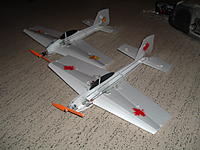 Views: 182
Views: 182 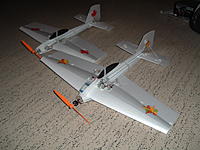 Views: 154
Views: 154 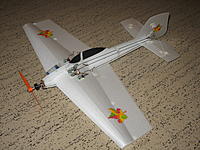 Views: 123
Views: 123 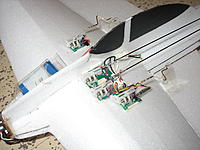 Views: 125
Views: 125 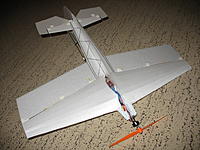 Views: 126
Views: 126  Views: 125
Views: 125 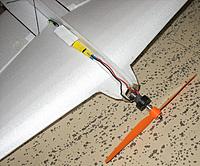 Views: 125
Views: 125  Views: 116
Views: 116 